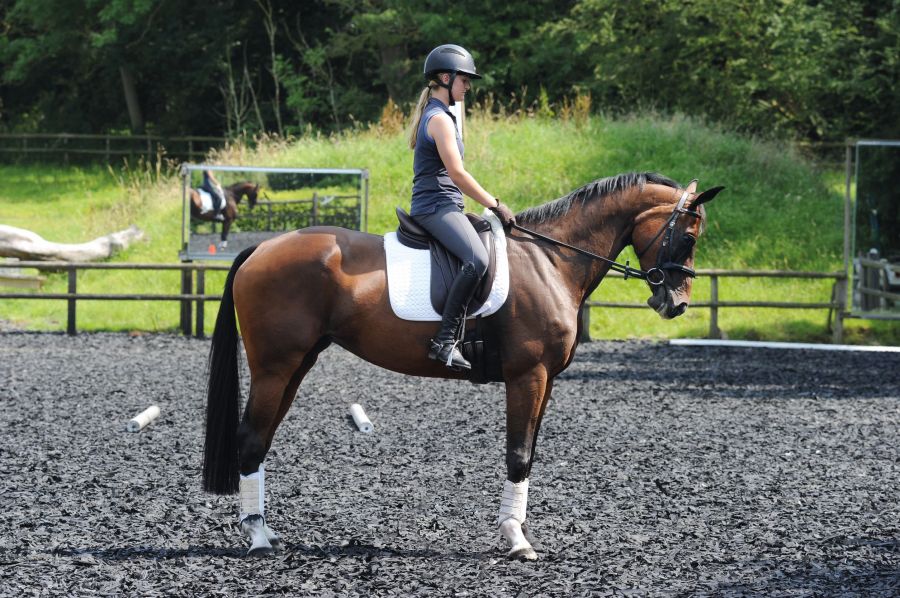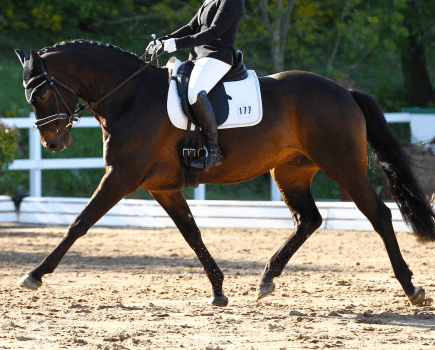Balance and preparation are both essential for achieving the perfect square halt, according to dressage trainer and judge Vikki Hayton. She suggests the following exercises to help you establish a balanced position, focusing on the lower leg, before providing some training tips to improve your horse’s halt.
Check your balance
If your horse struggles to work symmetrically, or you’re frequently falling off when your horse does something unexpected, there’s no need to apply Velcro to your saddle just yet. Changing your leg position could be all you need to do.
“A lot of riders aren’t in balance when they’re sitting in the saddle because of their lower leg position,” explains Vikki. “Some people rotate their hips slightly and their body compensates by bringing the lower leg forward. Ideally, your lower leg needs to be directly underneath you.
“Your hips should be straight and you should feel like you’re sitting evenly on your two seat bones,” adds Vikki.
Try this:
To check your balance, stand up in the stirrups. You should be able to stand and be in balance as if your horse wasn’t there. Have a glance down to check that you can see your toes.
Once you’ve got the hang of standing in your stirrups in halt, do the same while your horse is walking round. It’ll be a challenge and will show whether your lower leg is correctly positioned.
Address the halt
Having a horse that struggles to halt can be frustrating, especially if it feels like you’re having to hold him in place or if he is wonky. Now you have addressed your own balance, there are a few tricks that you can do to help him achieve the perfect square halt, without him having to depend on you.
“Preparing your aids and collecting the walk will help to get your horse ready for halt,” says Vikki. “He needs his neck straight and his ears level. He’s also more likely to halt square if he’s not feeling too much pressure from the bit.
Try this:
- Walk your horse on a 20m circle.
- A quarter of the way around, prepare to halt.
- Sit centrally in the saddle with even weight through your seat bones and collect your horse’s walk until he halts.
- Halt for a couple of seconds. Make sure you release the pressure from the reins so that you’re not holding him in place.
- Walk on and at the next quarter point, repeat the hat.
- Repeat the exercise several times around the circle until you see his halt improve.
If he walks off when you release the rein aid, let him walk forward a couple of paces and then ask for halt again. He’ll soon learn it’s better to stand still until he’s asked to move.
Meet the expert: Vikki Hayton is a British Dressage trainer, judge and rider. She is a UKCC Level 3 coach, British Event trainer, and has her BHSI. She also runs College Farm EC.









